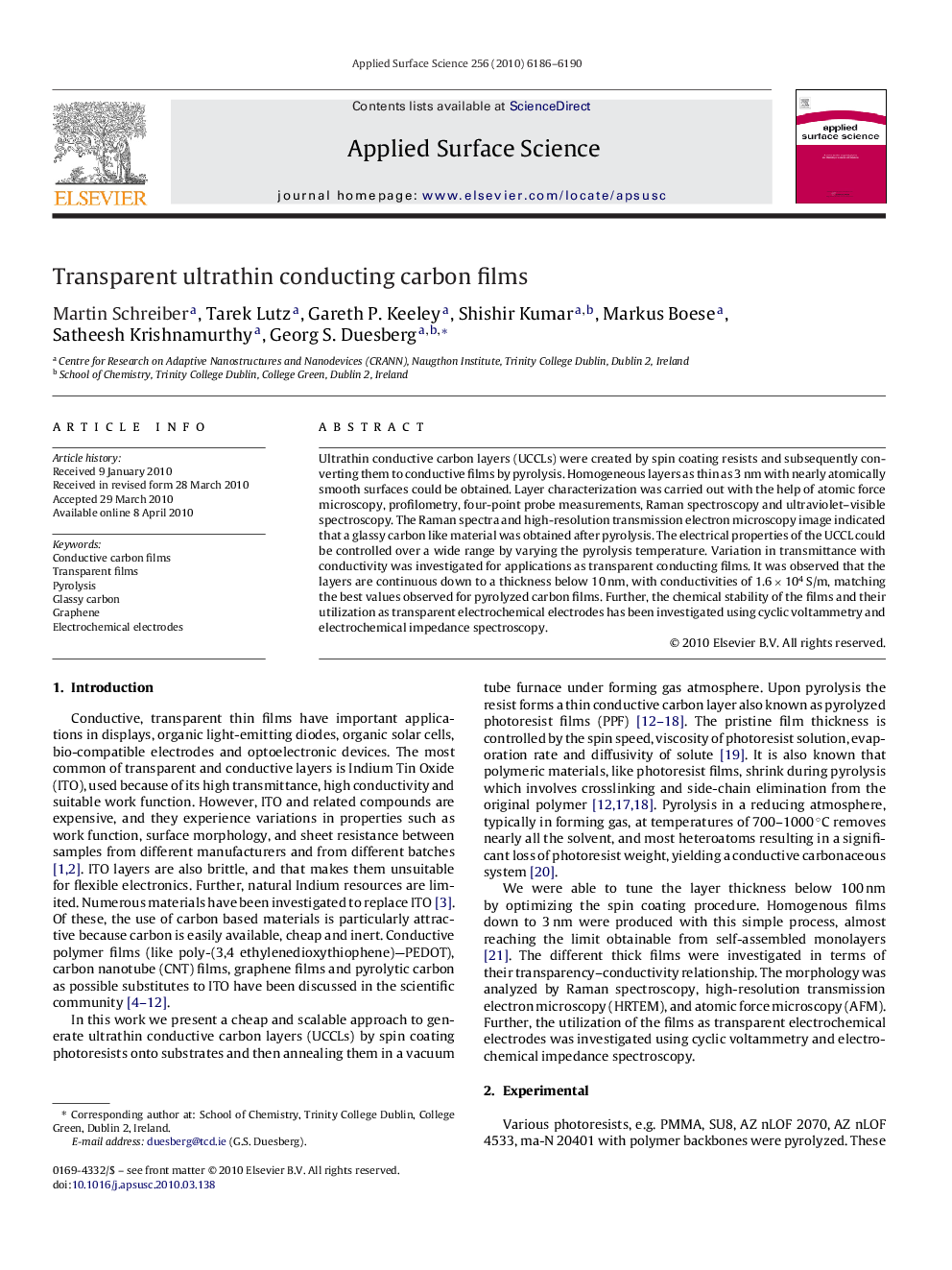| Article ID | Journal | Published Year | Pages | File Type |
|---|---|---|---|---|
| 5368230 | Applied Surface Science | 2010 | 5 Pages |
Abstract
Ultrathin conductive carbon layers (UCCLs) were created by spin coating resists and subsequently converting them to conductive films by pyrolysis. Homogeneous layers as thin as 3Â nm with nearly atomically smooth surfaces could be obtained. Layer characterization was carried out with the help of atomic force microscopy, profilometry, four-point probe measurements, Raman spectroscopy and ultraviolet-visible spectroscopy. The Raman spectra and high-resolution transmission electron microscopy image indicated that a glassy carbon like material was obtained after pyrolysis. The electrical properties of the UCCL could be controlled over a wide range by varying the pyrolysis temperature. Variation in transmittance with conductivity was investigated for applications as transparent conducting films. It was observed that the layers are continuous down to a thickness below 10Â nm, with conductivities of 1.6Â ÃÂ 104Â S/m, matching the best values observed for pyrolyzed carbon films. Further, the chemical stability of the films and their utilization as transparent electrochemical electrodes has been investigated using cyclic voltammetry and electrochemical impedance spectroscopy.
Related Topics
Physical Sciences and Engineering
Chemistry
Physical and Theoretical Chemistry
Authors
Martin Schreiber, Tarek Lutz, Gareth P. Keeley, Shishir Kumar, Markus Boese, Satheesh Krishnamurthy, Georg S. Duesberg,
